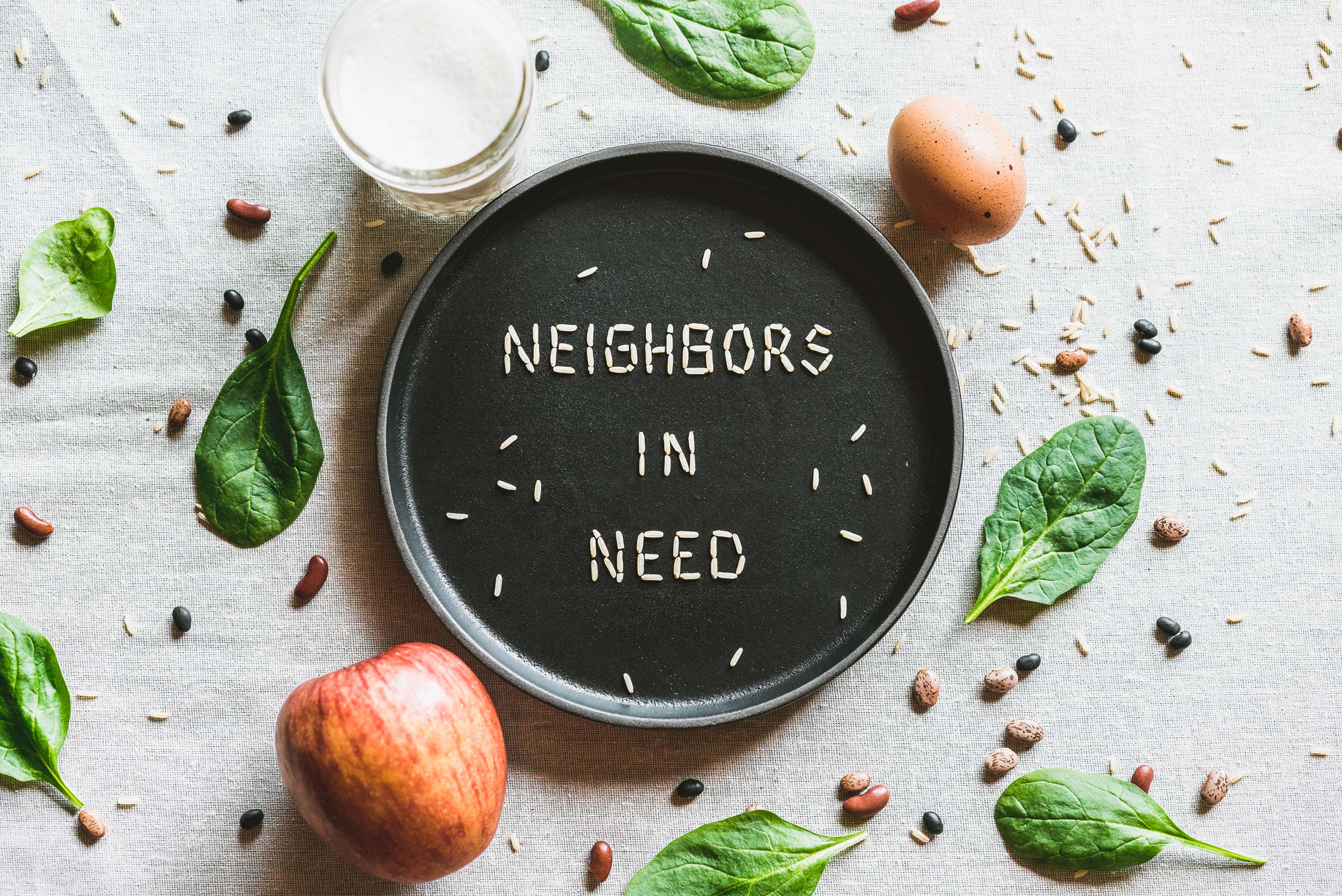
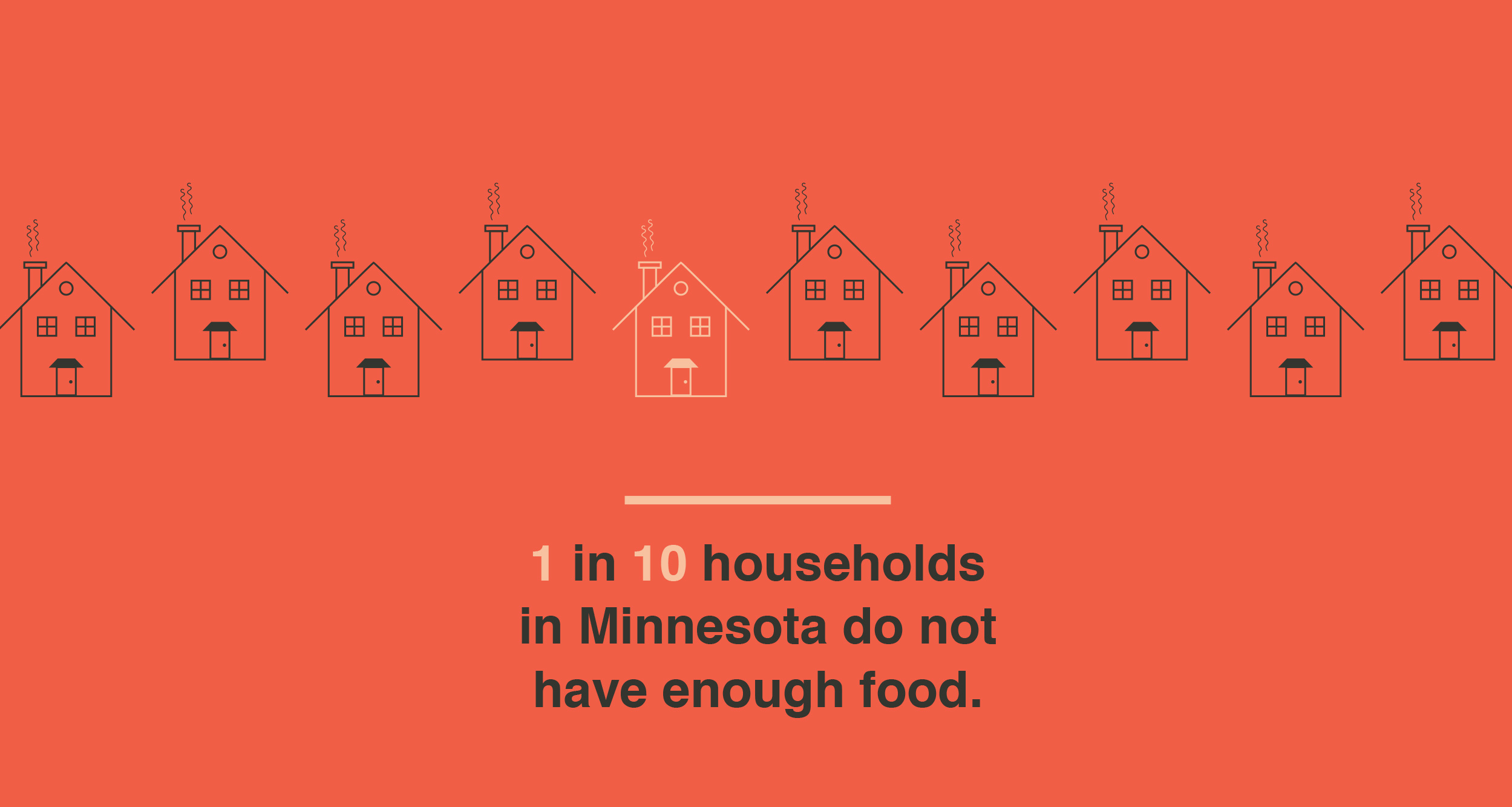
Story by Mo Perry and Quinton Skinner


A couple of years ago, Elena was a hardworking mother of two, juggling parenting duties and a full-time job in the Twin Cities. Elena’s mother helped out with childcare while Elena and her husband Bill worked, and between Elena’s income and Bill’s seasonal landscaping job, the family of four was scraping by.
Then in 2016, Elena’s mother moved out of Minnesota. “That’s when everything started going bad,” says Elena. “I had to stop working because, out of the two of us, my husband was bringing in more, and we had no childcare. Everybody I know works, and daycare is something like $15,000 a year. That was completely not an option for us.”
Elena and Bill started putting the family’s grocery bills on their credit card, which they quickly maxed out. In the summer, when his landscaping job was in full swing, Bill brought home $2,360 a month (half of which went straight to pay the mortgage), but winter was hard. His boss would occasionally bring him in to wash trucks during the off-season, but the sporadic work was never enough.
He spent most of his time looking for temporary work to fend off the family’s mounting sense of financial crisis.
When the family’s car broke down, repairs and a rental car (which Bill needed to get to the irregular work he did have) added to their credit card debt.

Elena managed to land an interpreting job, but she couldn’t afford the $500 licensing fee the position required, not to mention the cost of the childcare she would need to find for her baby daughter. Instead, she passed on the job and pulled her son out of preschool to save the $45 a month it was costing the family in tuition.
“I know I can get a job,” says Elena. “I’ve always worked. But I feel like my hands are tied. I’m stuck. Right now, I have these young kids. In three or four years [when they’re in school] it will be better. Or if my mom comes back. I just need help to get through this period.”
For the past year, the family has relied on food shelves to feed their children. “I didn’t want to go to the food shelf for a long time, because I was too embarrassed,” says Elena.
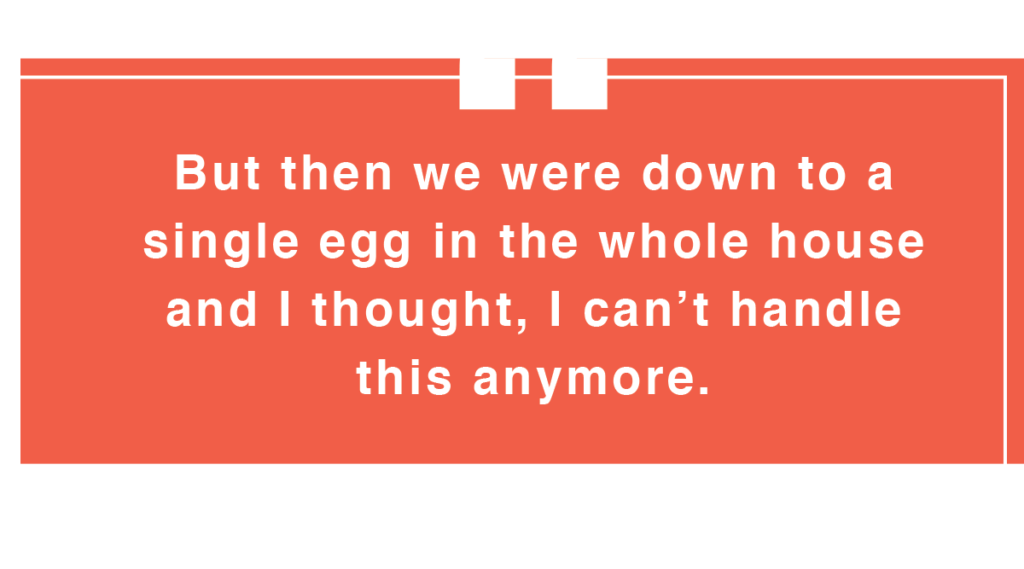
When Elena returned home from her first visit to the food shelf, it was like a party.
“The kids were crying from happiness,” she remembers. “I brought home rice, beans, meat, eggs, milk, apples…. It was so great.”
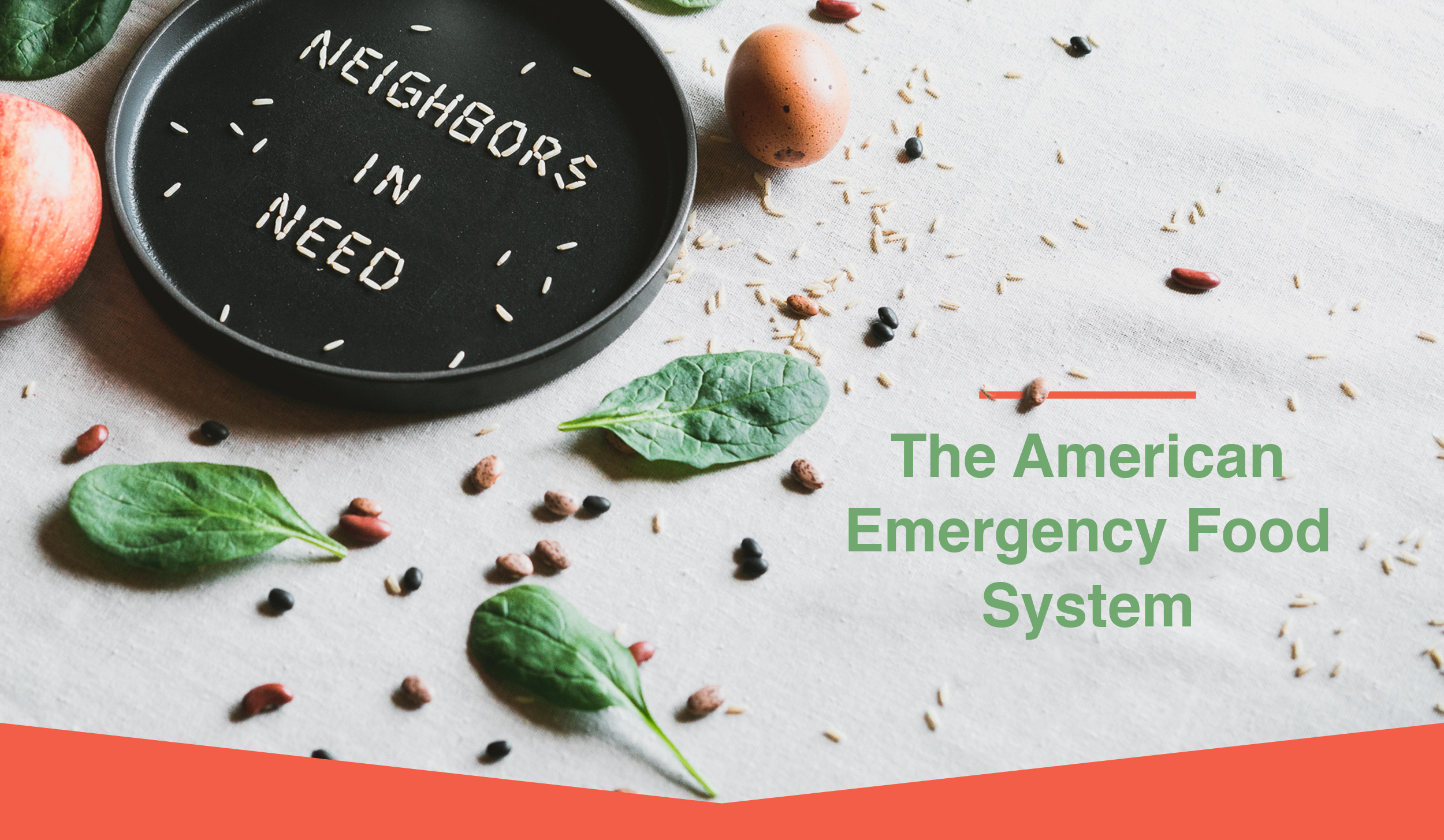
The first food banks emerged in the United States in the 1960s along with a robust federal Food Stamps program that was broadened in a bipartisan effort in 1977.
In 2008, the Food Stamps program was renamed the Supplemental Nutrition Assistance Program (SNAP), and food stamps were exchanged for Electronic Benefit Transfer (EBT) cards, instituted to reduce fraud as well as stigma for benefit recipients.
In response to the Great Recession of 2008, funding and eligibility for SNAP were expanded from 2009 through 2013. Participation grew by approximately 50 percent during that period, peaking at more than 47 million Americans before eligibility criteria tightened again in November 2013.
Despite the unprecedented number of Americans receiving SNAP benefits in the years following the Great Recession, food pantries and charitable food programs also saw huge increases in demand. According to Feeding America, food pantries served more than 46 million Americans in 2014 (including 12 million children), demonstrating that many low-income families and individuals have to supplement the federal food assistance dollars they spend at retailers with food from charitable pantries and food shelves.

Renée is a Bloomington, Minnesota resident on disability due to multiple injuries to her neck and spine following a car accident that rendered her unable to work. When she received her first monthly SNAP benefit, she was surprised to find that it didn’t cover anywhere near a month’s worth of food. She called her social worker, thinking there was a mistake. “She told me, ‘We don’t expect it to cover all your food, you’ll also have to go to a food shelf,’” remembers Renée. “So that’s what I do.’”
Lennie Albers is the Executive Director of the McLeod County Emergency Food Shelf, located about an hour west of the Twin Cities. Though McLeod County’s unemployment rate has dropped from 8.5 percent in 2012 to 3.8 percent at the end of 2017, Albers says her food shelf has seen a steady increase in demand over that same time period. In order to ensure the food shelf stretches its resources to meet the needs of as many people as possible, individuals are limited to one visit to the McLeod County Emergency Food Shelf every 30 days (a second monthly visit is only available with a referral from a social services agency), and the amount of food they can take is determined based on household size. The food shelf averages about six days’ worth of food per household per visit—a valuable supplementation to SNAP benefits for those who need it, but with little flexibility to meet increased demand if SNAP benefits constrict any further.

Elena recently completed her application for SNAP benefits and is waiting with bated breath to find out if her family will receive them. But even if they do, she may not be able to rely on them for long.
President Trump proposed steep cuts to SNAP in his 2018 federal budget, slashing the program by $193 billion over the next ten years through even stricter work and eligibility requirements, reduced benefits for qualifying participants and a requirement that states pay for 25 percent of the benefits used by their residents. In Minnesota, this is projected to be a cost of $150 million just to continue providing benefits to those who will meet the stricter new eligibility rules.
Second Harvest Heartland, one of the nation’s largest hunger relief organizations that provides meals to nearly 1,000 food shelves and pantries across Minnesota and western Wisconsin, commissioned a study by Boston Consulting Group to analyze the potential impact of these cuts. The study found an existing meal gap of 81 million meals in Second Harvest Heartland’s service area—a gap that could grow by another 27 to 81 million meals by 2022, depending on how much of the $150 million in lost federal SNAP funding Minnesota opts to replace.
“We’re looking at a coming tsunami of need,” says Second Harvest Heartland CEO, Rob Zeaske. “There’s going to be a huge increase in demand, both among clients we already serve and those we don’t yet serve.”
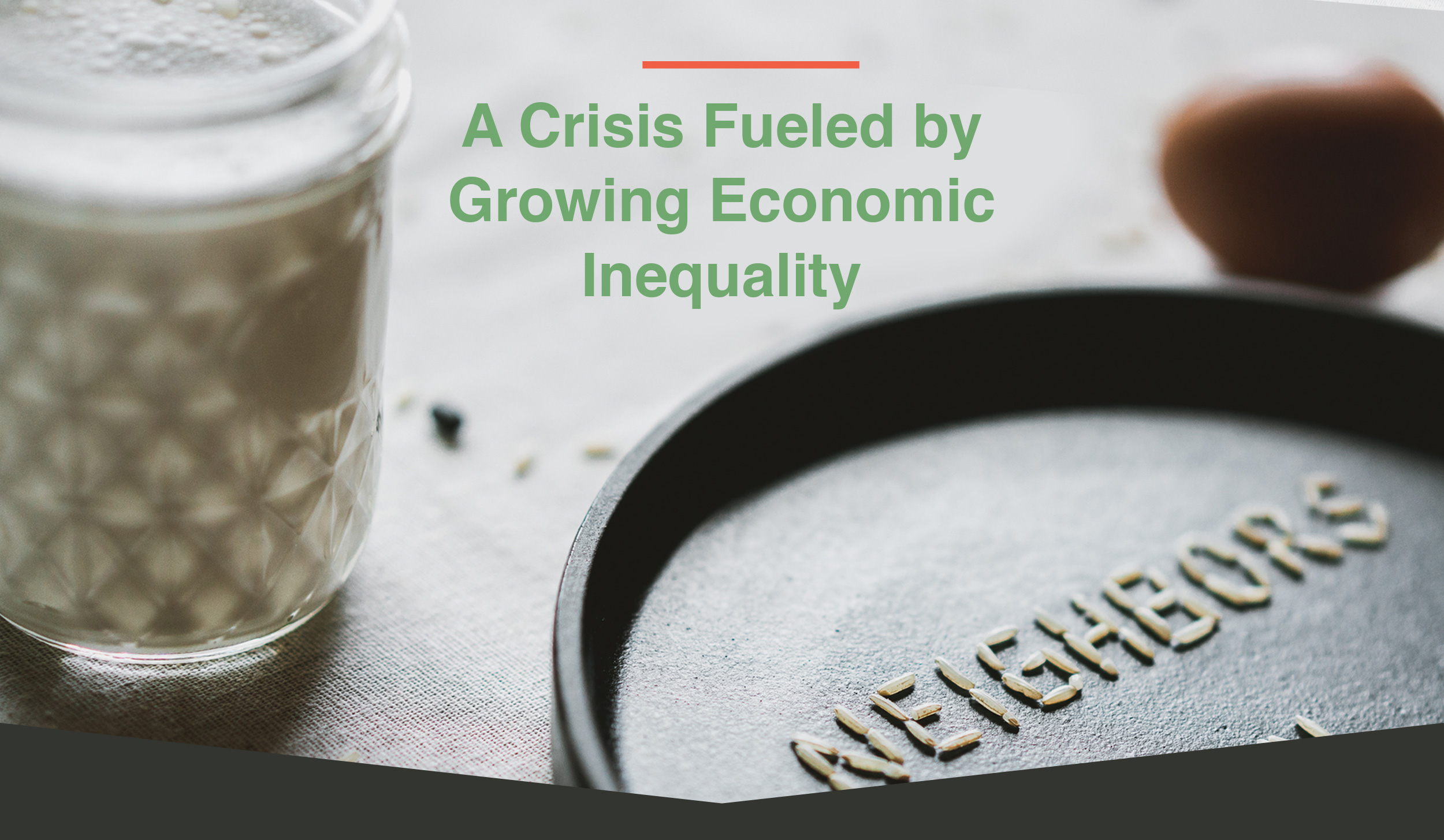
Despite a steadily growing economy, federal food assistance and charitable hunger relief have remained high partially because wages simply haven’t kept up with cost of living increases. “Community members who access our services are cost burdened by housing, child care and transportation,” says Horn. “They’re spending up to 85% of their monthly income on housing alone, and that leaves very little for other basic needs.”
“We see people working as hard if not harder than they were, but wages haven’t kept up,” says Jason Viana, Executive Director of The Open Door Pantry in Eagan, Minnesota. “You can work harder and be able to afford less.”
Molly Link, Social Services Associate Director at VEAP (a social services organization in Bloomington), adds that most of the families she works with are headed by people who work at least 20 hours per week. Across Minnesota’s eight congressional districts, between 79 and 87 percent of families that receive SNAP benefits had at least one adult work in the past 12 months. “They’re not livable-wage jobs,” explains Link. “Families are coming to us who work full-time, and it’s never going to cut it or be enough to pay rent, get healthy food and pay other bills just to live.”
She also sees families such as Elena’s, which would benefit from having both parents work but are forced to live on only one income because of childcare issues. “So people learn to go without, and often that’s without food,” says Link.
“That’s why SNAP benefits are so important. It’s a budgeting tool so these families can put what little money they have toward gas to get to their job.”
One in ten Minnesota households is affected by hunger; the problem spans urban, suburban and rural areas. “These are your neighbors,” says Simone French, Ph.D., a Professor of Epidemiology and Community Health at the University of Minnesota. “It’s people you go to school with or live near. They may be trying to work a couple jobs, and SNAP is one piece of the puzzle for them.”
Seniors living on fixed incomes are the fastest-growing segment of SNAP beneficiaries, and the number of seniors visiting food shelves has grown by 49 percent since 2012. “We get a lot of seniors coming in [to VEAP’s food pantry] for the first time, saying, ‘I’ve never needed this but my housing and other expenses are going up, my income is staying the same, and this is the only way I can survive,’” says Link.

“There is extensive evidence that SNAP is by far the best social assistance that a country can provide,” says Peter Lawyer of Boston Consulting Group. “You take people who have a short-term disruption in their family’s budget and help them get out of a situation that could toss them into complete chaos.”
When children have enough to eat, they perform better in school, have higher graduation rates and are better positioned to become successful members of the workforce. One recent study found that food insecure households in the U.S. incur $77.5 billion in additional health care expenditure annually. Another study by the University of Minnesota estimates that hunger costs the state $1.6 billion per year in medical and education costs and lost productivity.
On the other side of the ledger, Moody’s Analytics estimates that every dollar of SNAP generates $1.70 in economic stimulus, supporting local grocers, workers, and farmers and serving as an important economic engine.
“Traditionally, hunger is an issue of humanity and dignity––we want our neighbors to thrive,” says Rob Zeaske. “But it’s also about the economy. Underfed seniors spend more time in the hospital; people with diabetes need more medical care when they eat only cheap calories. Hunger is a massive drag on schools and disproportionately affects low-income kids who don’t get right inputs to grow and thrive in the way we want.”
What will happen if the proposed cuts to SNAP become law? “More families will end up in crisis,” says Link. “Crisis is more expensive [for social services organizations] to resolve. We try to put our efforts into prevention, and further cuts would impact our ability to do that.”
Renée worries about what will happen to her and her 92-year old mother (who also receives SNAP benefits of $34 every month to supplement her monthly pension of $200) if cuts go through. “If our benefits get cut, we don’t get to go back to the food shelf and get 10 more items. If SNAP is cut, when it’s already not supplying a month’s worth of food, there’s nowhere else to go.”
Elena is still waiting to see if her SNAP benefits come through, and if so, how long they will last. In the meantime, she and Bill are celebrating the small raise he’ll be getting from his landscaping job this year. She hopes to have enough wiggle room in the family budget to buy her kids new coats and shoes.
“Growing numbers of people are needing help,” says Jason Viana. “They’re working hard and not making it, and they’re receiving the message [with these proposed cuts] that their society doesn’t care about them. When people feel injustice, it impacts their ability to have hope, which is the genesis of all good things in society. You endure things because you hope it will get better.”


This story was created in partnership with
Second Harvest Heartland.
For more information on how you can help feed our neighbors in need, please visit http://www.2harvest.org for opportunities to donate, volunteer, or participate in local events and promotions. Second Harvest Heartland is one of the nation’s largest and most innovative hunger relief organizations, driven by a mission of helping hungry neighbors find their next meal—so they can thrive at work, in the classroom and in their communities.
Contributors




